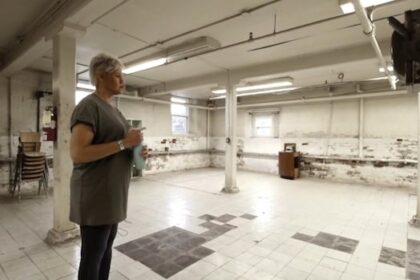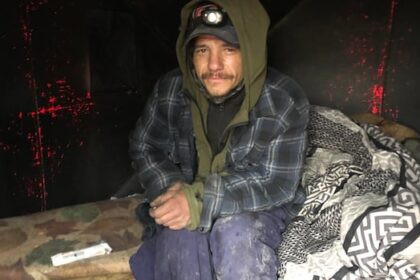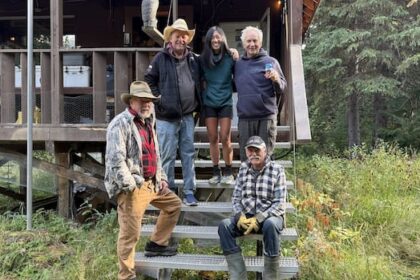From training thousands of students how to use injectable naloxone, Chloe Goodison has seen how daunting it can be for them to administer — even just when practising. Students express worries that their hand will shake or they’ll forget the steps, fear of needles, or that they’ll do something wrong in administering the overdose prevention drug. “They’ll turn to us and they’ll say, ‘I don’t think I would be able to do this in an emergency,’” said Goodison, founder of NaloxHome overdose prevention training. Even though she has trained others on it countless times over the past four years, injectable naloxone is not what she would prefer to use either. In her bag, she carries with her a small white nasal spray — a dose easily administered through someone’s nose to reverse an overdose.Although nasal naloxone is free in Quebec, Ontario, the Yukon, and the Northwest Territories, most residents of B.C. have to pay — with B.C. pharmacies typically charging around $75 or 80 for a two-dose box.“To me, it’s just worth it to have, even if it’s more expensive,” Goodison said.“Nasal naloxone is so much easier to use.”Politicians, experts, and harm reduction advocates are calling for nasal naloxone to be free for everyone in B.C. — as it is in other provinces — as they say providing a more accessible option for the general public could make a difference in saving lives amid the toxic drug crisis. While the province has explored wider distribution of the spray for free as a pilot program, Health Minister Josie Osborne says it has not completed an evaluation of a pilot program that was scheduled to have been completed this summer.The push for nasal naloxone to be free and widely available, like injectable naloxone, is accelerating following the fatal overdose of student Sidney McIntyre-Starko at the University of Victoria in January 2024.Each floor of the University of Victoria’s student residences now has new signage and naloxone. (Emily Fagan/CBC)Danya Fast, an assistant professor in the University of British Columbia who researches young people who use substances, says that while intramuscular naloxone is most useful for health-care workers and first responders, she sees the nasal spray as a more accessible tool for the general public.“Having the nasal naloxone universally available to young people — and having all young people know what it is, how to use it, when to use it, and what happens when you use it — would be a really critical life-saving step forward in this province,” she said.Through a pilot program launched in May 2024, B.C. made a one-time public purchase of 60,000 nasal naloxone kits — paying about $123.50 per kit. Fifty thousand of these two-dose kits were sent to pharmacies across the province for people in “priority populations:” those in cold climates or others who may have difficulty with syringes, youth who may witness an overdose, and Indigenous people. This expanded in July 2025 to include anyone at risk of experiencing or witnessing an overdose, though additional kits were not purchased.WATCH | Why construction workers prefer nasal naloxone:Why B.C. construction workers prefer nasal naloxone at workTrevor Botkin, the manager of industry relations for the Construction Foundation of B.C., says that having the nasal form of naloxone — a drug which helps reverse opioid overdoses — would help people with an aversion to needles. Botkin says using needle-based naloxone kits can also be problematic for construction workers with dirt on their hands.The rest of the naloxone was sent as a one-time resource to post-secondary institutions and other public agencies across the province.This January, when laying out priorities for Osborne to take on as health minister, Premier David Eby urged her to continue expanding access to nasal naloxone.To Claire Rattée, B.C. Conservative MLA and Critic for Mental Health and Addictions, making nasal naloxone widely available for the general public is “a no-brainer.” She asked Osborne about the pilot program, and whether B.C. is considering making nasal naloxone widely available to the general public, during a committee meeting in April. Osborne said her ministry is looking to evaluate the first year of the pilot program.“That evaluation should be done by late summer,” said Osborne.Health Minister Josie Osborne says the nasal naloxone pilot project is still being evaluated, months after an evaluation was initially planned to be complete. (Mike McArthur/CBC)However, when asked in mid-November by CBC News, the minister said the evaluation is still “being completed” and did not say whether she would support making nasal naloxone free for the general public.“Nasal naloxone has a really important role to play, and it is absolutely correct that it is easier for many people,” she said.“I’ll have more to share about this soon.”The B.C. Centre for Disease Control, which oversaw the pilot, said it is “a bit too early” to share data, and did not respond to further questions from CBC News.Caroline McIntyre, an emergency physician whose daughter Sidney’s death from a fatal overdose prompted more calls for accessible nasal naloxone, says that her experience with the pilot program showed it did not go far enough in providing take-home kits in areas where targeted populations, particularly young people, need them most. Sidney McIntyre-Starko’s death following an overdose at the University of Victoria prompted a call for more accessible nasal naloxone. (Submitted by the McIntyre-Starko family)In spite of not meeting the eligibility requirements, she says she was able to pick up nasal naloxone for free at multiple pharmacies in Vancouver, and was typically not asked data-collection questions.Student societies at the University of B.C. and the University of Victoria say they did not receive any kits to distribute from the province. A nasal naloxone kit installed in the UVic student union building over the summer by the university has since been used and not replaced, according to the student society.WATCH | Coroner’s inquest into McIntyre-Starko’s death releases findings:Coroner’s inquest into UVic student’s overdose death issues findingsA coroner’s inquest into the overdose death of 18-year-old UVic student Sidney McIntyre-Starko released its findings Thursday. The inquest jury is calling for action at numerous levels, from government ministries and the university to 911 dispatchers. Karin Larsen has the details.“The government purchased that nasal naloxone at a time when they were receiving a lot of bad press … I believe they eventually created that pilot project so they could delay committing to providing nasal naloxone in B.C. for anyone who prefers it over the injectable,” McIntyre said. Some pharmacies are still giving out free nasal naloxone while one-time supply lasts, but Fast says officials should act to make it available more broadly.“This is something that we can do now,” said Fast.“When there’s a real call for something coming from young people, coming from families, those are the kinds of interventions that we want to really prioritize.”
Experts, politicians are pushing for widespread free nasal naloxone. So why doesnt B.C. have it?












